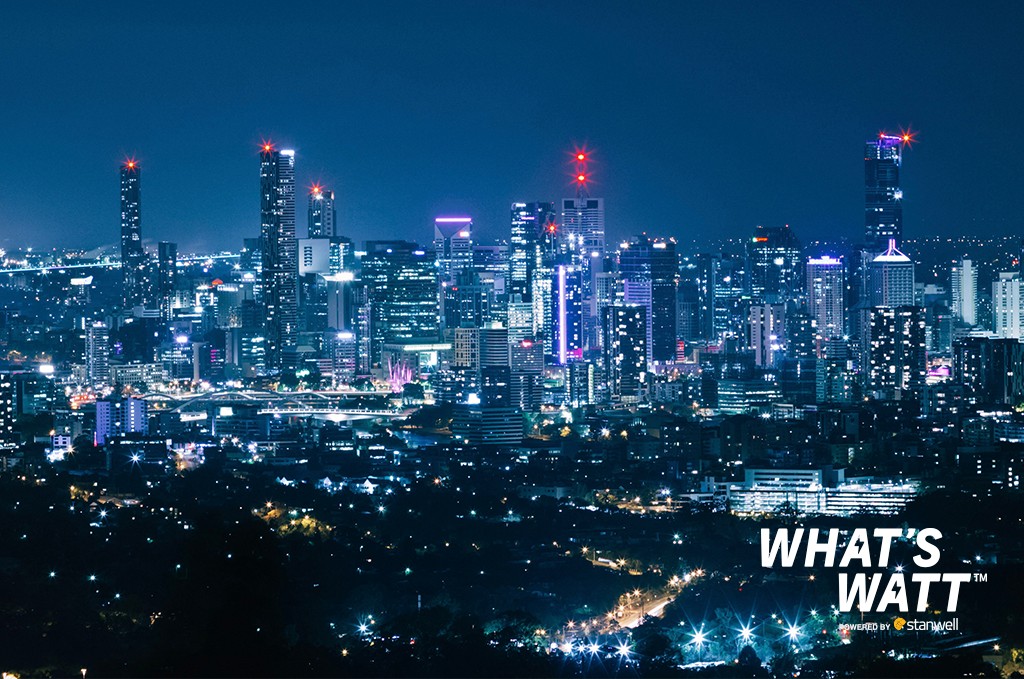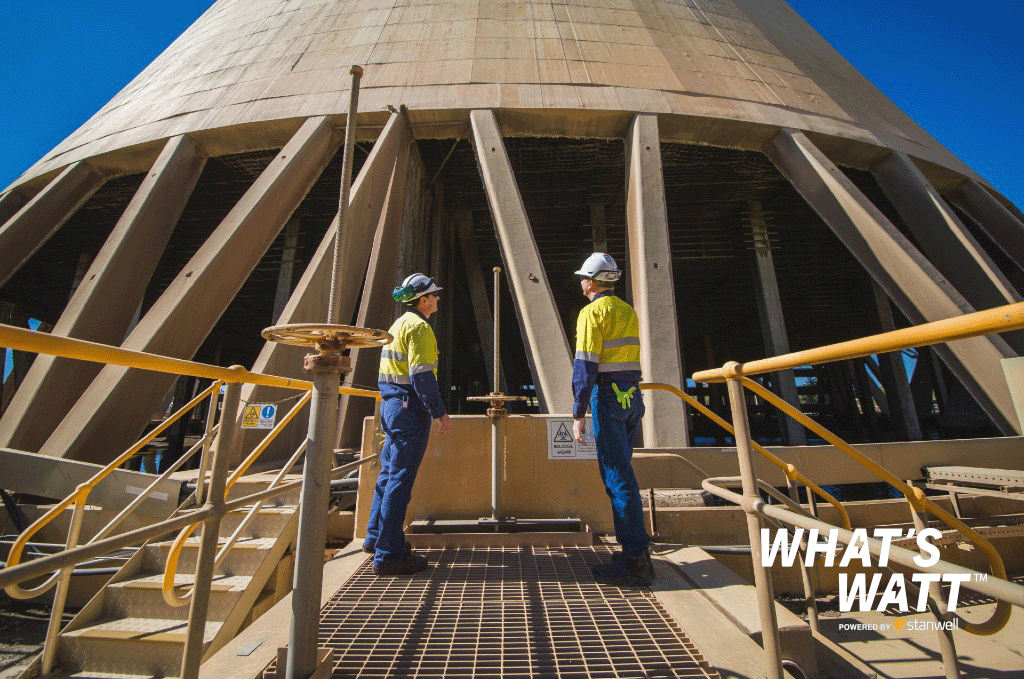Earlier this month, the Australian Energy Market Operator (AEMO) made the unprecedented decision to suspend the spot market in all regions of the National Electricity Market. Here’s what that means – and why the suspension was lifted.
What is the National Electricity Market?
The National Electricity Market (NEM) is a wholesale spot market in which generators sell electricity and energy retailers buy electricity. It’s the world’s longest interconnected power system, and includes Queensland, New South Wales, the Australian Capital Territory, Victoria, Tasmania and South Australia. (Because of the distance between networks, Western Australia and the Northern Territory aren’t connected to the NEM.)
Generators offer to supply the market with a certain amount of electricity for a particular price. AEMO, which operates the market, accepts those offers, starting with the cheapest generator and working their way up to the more expensive generators until enough electricity has been secured to meet demand.
This process repeats every five minutes, with the highest offer that AEMO accepts from a generator being set as the spot price – the cost of wholesale power – for that five-minute period.
This price changes throughout the day depending on demand, and is usually higher in the mid-afternoon and evenings, when people and businesses are using the most power.
Energy retailers limit their exposure to these price variations in the market by entering into long-term contracts with generators. Households and small businesses then buy their electricity from these energy retailers, through a plan that sets out how much they’ll be charged for their energy over a fixed period of time.
This means that you, as a consumer, aren’t paying the spot price for electricity directly. In fact, the wholesale cost of energy is only one of the four major costs that make up your electricity bill.
But the spot price does eventually filter through to consumers, and as a result of rising wholesale prices, the Australian Energy Regulator (AER) recently announced that energy retailers would be allowed to raise the price they charge customers from 1 July 2022.
Why was the market suspended?
On 15 June 2022, AEMO announced it had temporarily suspended the spot market in all regions of the NEM.
Though AEMO had previously suspended the market in specific states, this was the first time the market operator had suspended the NEM across all states.
The suspension came as the result of a perfect storm in Australia’s energy sector that has coincided with a meteoric rise in international coal and gas prices.
Because the traditional generation assets powered by these fossil fuels still make up the majority of generation in the NEM, and are still required to supply essential system security services, such as inertia, this means the cost of generating electricity has gone up.
In recent weeks, the market has also seen around 3000 megawatts (MW) of unplanned generator outages, as well as a large number of units being out of action for planned maintenance (a typical situation at this time of year); planned transmission outages; periods of low wind and solar output that have limited renewable generation; and an early onset of winter that has increased demand for both electricity and gas.
With wholesale prices surging, AEMO’s price cap was triggered at $300 per megawatt hour (MWh). This was much less than the usual market price cap of $15,100/MWh – and with extremely high coal and gas prices, it didn’t cover the cost of producing power for some generators, leading them to withdraw availability from the market.
To ensure there would be enough supply to meet demand, AEMO directed five gigawatts of generation through direct interventions on 14 June 2022. The next day, the market operator decided it had become impossible to continue operating the spot market this way and ordered the suspension of the market to begin.
The market being suspended meant that generators would inform AEMO of their availability, and AEMO would tell them when to run to ensure supply met demand.
Instead of the spot price being set through the competitive bidding process described above, prices were fixed at the average of the past 28 days for each hour of the day – ranging from $150 per megawatt hour (MWh) to $300/MWh across the day.
If the cost of generating electricity was higher than the price for that hour, generators were able to apply for additional compensation to make up the shortfall.
The power to suspend the market is given to AEMO under clause 3.14.3 of the National Electricity Rules, which declares the AEMO can suspend the spot market when it determines it has become impossible to operate in accordance with the provisions of these rules.
AEMO CEO Daniel Westerman said the suspension of the market was the best way to ensure a reliable supply of electricity for Australian homes and businesses.
“The situation in recent days has posed challenges to the entire energy industry,” he said, “and suspending the market would simplify operations during the significant outages across the energy supply chain.
“We are confident today’s actions will deliver the best outcomes for Australian consumers, and as we return to normal conditions, the market-based system will once again deliver value to homes and businesses.”
The Australian Energy Council (AEC), the peak body for energy generators and retailers, said it supported the decision to temporarily suspend the market.
“It is quite clear that in these unprecedented circumstances, and following the application of the Administered Price Cap, the power system was becoming unmanageable,” AEC Chief Executive Sarah McNamara said.
“We hope the conditions improve in this new phase and we can soon return to an uncapped market.”
Why did the market resume?
From the beginning, AEMO stressed that the suspension was temporary, and would be reviewed daily.
Under the National Electricity Rules, AEMO is empowered to resume the market after a suspension of this nature when it’s confident that it’s once again possible to operate the market under the normal conditions, and that there’s minimal possibility of suspending the market again within the next 24 hours for the same reason.
On 22 June, seven days after the suspension began, AEMO announced the beginning of a staged approach to lifting it.
The announcement came after AEMO observed a clear improvement in market conditions, including 4,000MW of generation returning from outages.
The first step of lifting the suspension came on 23 June, when AEMO allowed the market to set the price again. From there, AEMO CEO Daniel Westerman said the market operator expected to see:
- The dispatch engine (the system used to schedule generation into the grid) operating with very few constraints.
- A low volume of directions from AEMO to generators. Instead, generators would respond to market signals.
- A reduction in forecast shortfalls of energy as generators responded to market signals.
Westerman said AEMO would monitor conditions across all regions in the NEM for at least another 24 hours before deciding to officially lift the suspension.
“By removing these conditions, we hope that the market will return to a normal bidding and dispatch situation – allowing the market to operate without major AEMO interventions and manual management of generation,” he said.
AEC Chief Executive Sarah McNamara said the staged return of the market was welcomed by generators and retailers.
“It will give generators confidence to bid into the market under more normal bidding and dispatch conditions,” she said.
“While fuel supplies remain tight, almost 4,000MW of generation capacity has come back online from outages thanks to the hard work of people at power plants.
“Whilst no power system operates without risk, the community should be reassured the worst of the supply issues that affected the market in recent weeks are behind us for now.”
On 24 June, AEMO formally ended the suspension of the wholesale electricity spot market in all regions of the NEM.
In announcing the end of the suspension, AEMO said a return to regular operations in the NEM was possible because they were observing a higher volume of normal electricity bidding and dispatching through the market operator’s automated resources, as well as reduced electricity shortfalls and less need for manual interventions.
How were consumers affected?
For consumers, it was business as usual – the suspension of the energy market didn’t mean they lost power. It was intended to ensure that they didn’t lose power, by making certain that there was enough generation available to meet demand.
You can learn more about how you can reduce your electricity usage and save money on your power bill here, and stay tuned to What’s Watt for the answers to all your energy questions as the market evolves.



